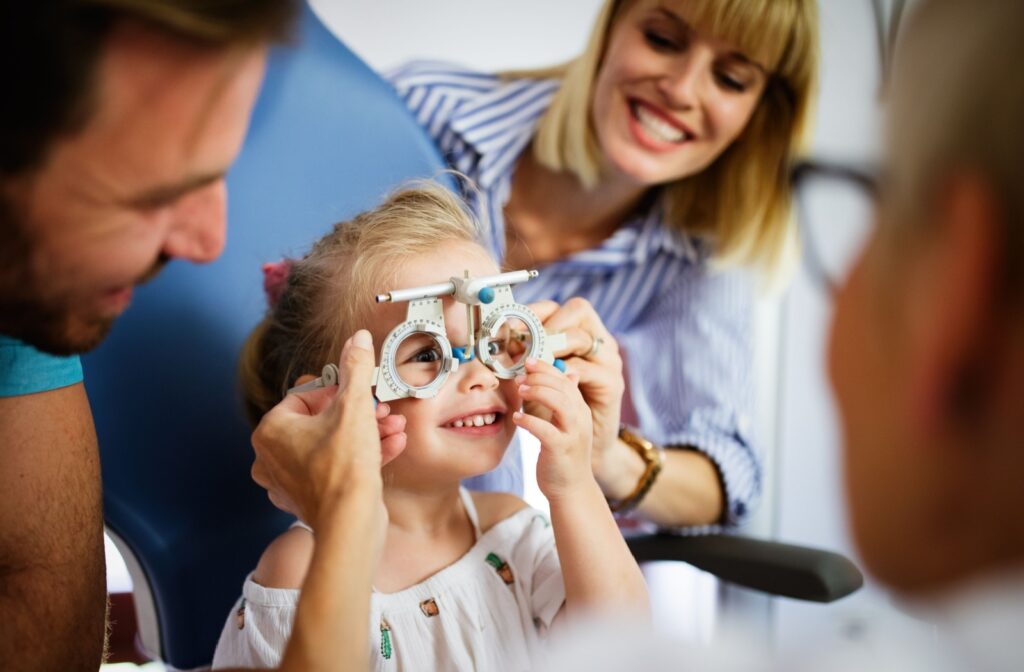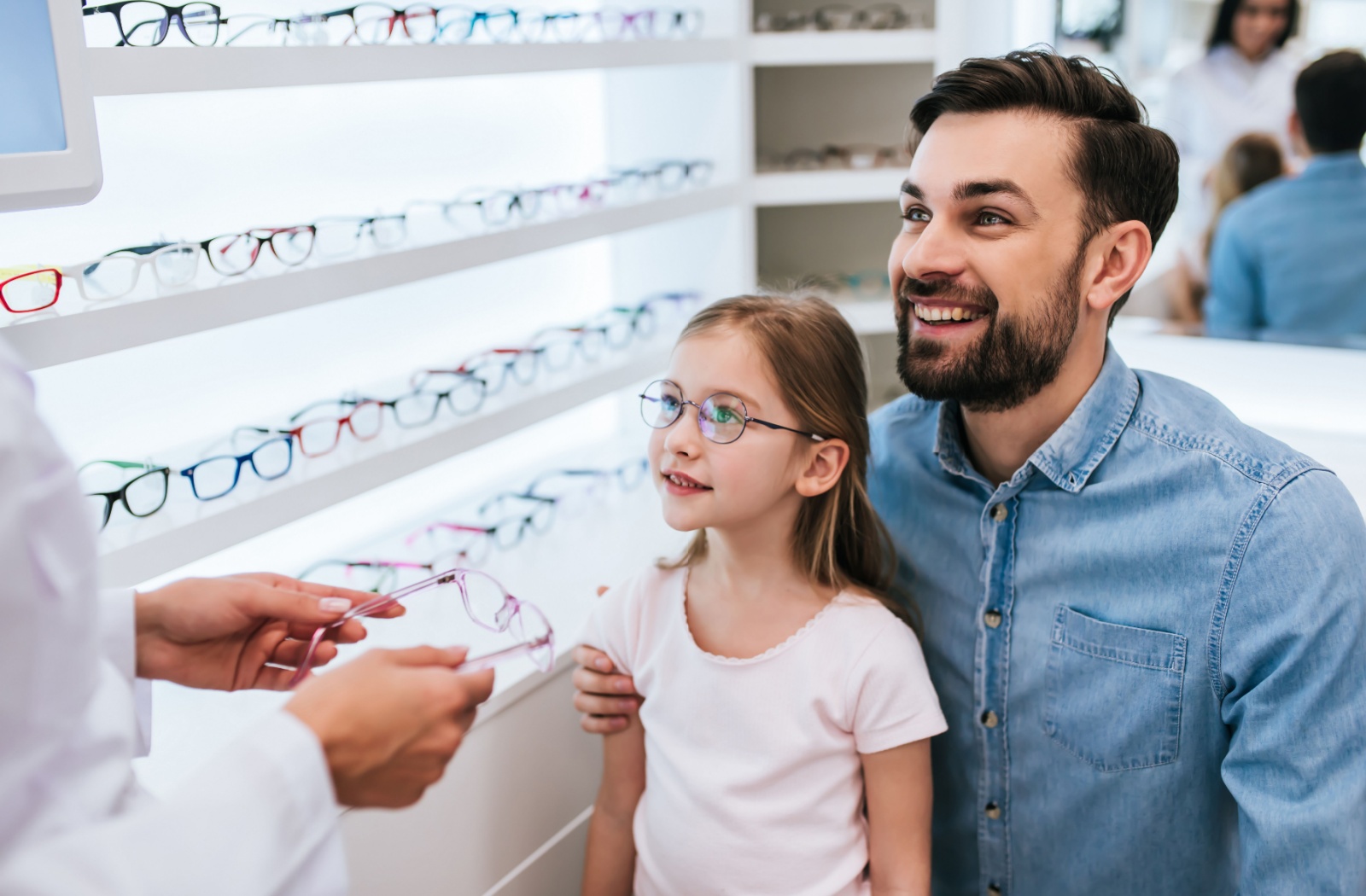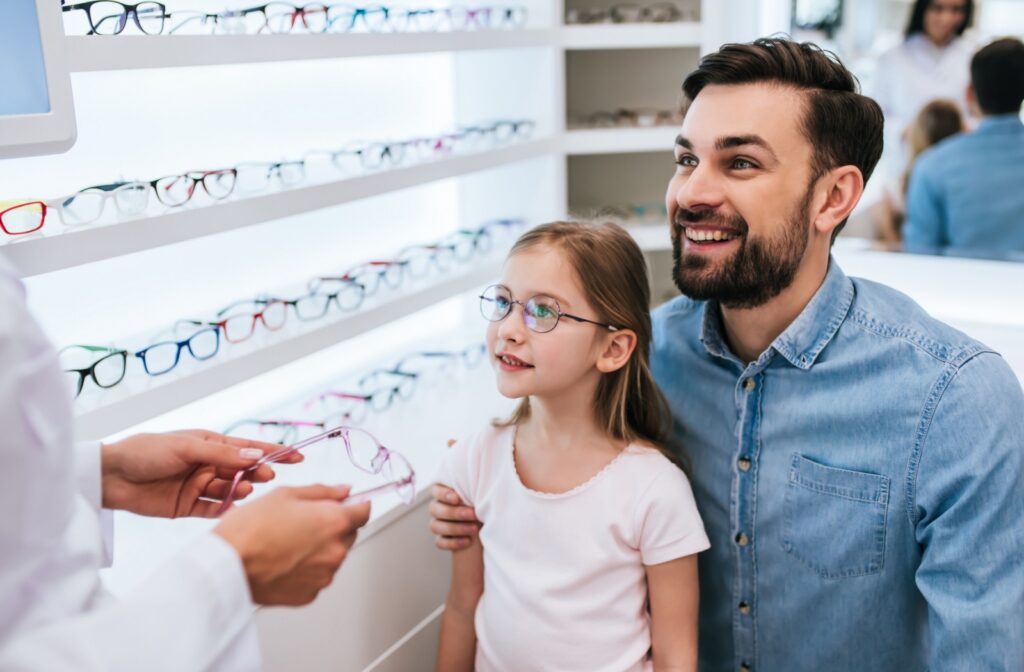Myopia has become increasingly common, especially among children, with more families noticing nearsightedness appearing earlier and progressing faster than before. Genetics can play a role, but daily habits and modern environments have an impact on how quickly vision changes.
Myopia progression happens when the eye grows longer over time, leading to worsening distance vision and increasing the risk of long-term eye health issues.
With early intervention and simple adjustments to daily routines, it’s possible to slow progression and protect lifelong vision health.
Genetics & Childhood Myopia
Children are more likely to develop myopia if one or both parents are nearsighted. Studies show that having one myopic parent increases a child’s risk, and having two myopic parents raises the risk even more. Genetics influences how the eye grows and focuses, which can lead to nearsightedness.
However, genetics is only part of the story. The sharp rise in myopia rates in recent years is largely driven by environmental factors, like more screen time and less outdoor play. Even if a child has a family history of myopia, simple lifestyle changes can help slow progression.
Knowing your family’s eye health history helps optometrists create personalized care plans. Combining early monitoring with healthy daily habits, such as spending more time outdoors, offers the best chance to protect your child’s vision.
Age-Related Changes & Eye Development
Myopia often develops during childhood when the eyes are growing quickly, usually between the ages of 6 and 12. As the eye grows, it can become too long, which causes light to focus in front of the retina and leads to blurry distance vision. The younger a child is when myopia starts to develop, the more likely it is to worsen over time.
Growth spurts during the teenage years can also speed up progression, especially with hormonal changes and more time spent on close-up activities like reading or screen use. For many people, myopia slows down and stabilizes by early adulthood once the eyes stop growing. Regular eye exams during these growth years are important to track changes in vision. Starting treatment early can help slow progression and protect a child’s eyesight, making childhood the ideal time for effective myopia management.
Environmental Factors Driving Vision Changes
Modern lifestyle changes have created an environment that promotes myopia development and progression. Extended periods of close-up work, reduced outdoor time, and increased screen exposure all contribute to worsening nearsightedness.
Digital Device Impact
Prolonged screen time has emerged as a risk factor for myopia progression. Children and adults spending excessive time on smartphones, tablets, and computers often develop accommodative stress—a condition where the eye’s focusing muscles become overworked from constant near-vision demands.
Poor posture during device use, inadequate viewing distances, and insufficient blinking rates compound these effects, creating multiple pathways for vision deterioration.
Outdoor Activity Deficiency
Research demonstrates a strong protective effect of outdoor time against myopia development and progression. Children spending at least two hours daily outdoors show lower rates of myopia development compared to those with minimal outdoor exposure.
Natural sunlight appears to trigger the release of dopamine in the retina, a neurotransmitter that helps regulate healthy eye growth. The varied focusing distances required for outdoor activities also provide beneficial exercise for the visual system, reducing the strain associated with constant near work.

Lifestyle Habits That Benefit Myopia Management
Limit Near Work Intensity
Extended periods of reading, writing, or detailed close-up tasks without adequate breaks create sustained accommodative demand on the visual system. This constant near-focus stress can accelerate axial elongation and worsen myopia over time.
Poor lighting conditions during near work compound this strain. Insufficient illumination forces the eyes to work harder, potentially accelerating myopia progression. Similarly, inappropriate viewing distances, such as holding books or devices too close, increase accommodative stress and associated progression risk.
Physical Activity
Sedentary lifestyles correlate with higher myopia rates and faster progression. Regular physical activity, particularly outdoor sports and activities, provides multiple vision-protective benefits beyond simple outdoor light exposure.
Exercise improves overall blood circulation, including to the delicate structures of the eye. Physical activity also naturally limits continuous near-work time, providing regular visual breaks that help prevent accommodative fatigue and associated progression risks.
The 20-20-20 Rule
Every 20 minutes of near work should be followed by looking at something 20 feet away for at least 20 seconds. This simple practice reduces accommodative fatigue and provides regular relief from near-vision stress.
Setting regular reminders and creating structured break schedules helps establish this beneficial habit. Parents can model good visual hygiene practices, making these breaks a natural part of family routines.
Treatment Options for Myopia
Myopia treatment options focus on providing clear vision while helping to slow down myopia progression. Here are a few commonly available:
- Eyeglasses: Prescription glasses provide clear vision for daily activities and may be the first step in managing myopia, especially for children.
- Contact lenses: Standard contact lenses offer clear vision and convenience for daily wear.
- Orthokeratology (Ortho-K) lenses: Custom-fit overnight lenses gently reshape the cornea while you sleep, providing clear vision during the day without glasses or contacts.
- Prescription eye drops: Medicated drops can help slow myopia progression, offering a simple, non-invasive treatment option.
- Laser eye surgery consultations: For some adults, refractive surgery may be an option to correct myopia permanently. Our team can determine if surgery is suitable for you.
By offering multiple treatment options, we can recommend the most suitable approach to help you or your child enjoy clearer, healthier vision both now and in the future.
Get Started Today
Myopia progression can be slowed with early action and the right care. Combining professional treatment with simple daily habits can help protect long-term vision. At Envision Eye Care, we offer personalized myopia management tailored to your needs. From comprehensive exams to ongoing treatment, our team is here to help you maintain clearer, healthier vision. Book your eye exam at Envision Eye Care today and take a proactive step toward better vision for the future.



